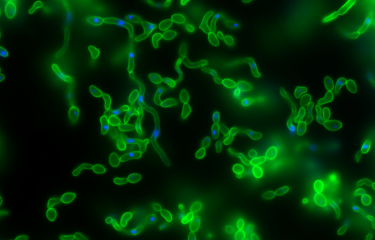In a study published on March 15, scientists demonstrate how the parasites responsible for leishmaniasis adapt to the insect they infect.
Leishmaniasis is a parasitic disease that affects several mammal species including humans. Leishmania, the parasites responsible, have a life cycle that involves them successively infecting both mammals and "vector" insects – phlebotomine sandflies – in turn. But Leishmania can be highly genetically diverse, and this can alter the symptoms they cause and make them more or less susceptible to drugs.
To characterize how the environment encountered in the digestive tract of sandflies affects this genetic variability, scientists from the Institut Pasteur and Charles University in Prague used secure protocols to infect sandflies with Leishmania donovani, one of the species that causes disease. They also mapped the genome of the parasites before and after infection to compare the two.
A hostile environment that drives selection
The scientists observed that the genome of Leishmania was modified when they infected sandflies – but in a very specific way. "Our analyses revealed signature mutations of oxidative DNA damage, suggesting that Leishmania suffer from oxidative stress inside the sandflies' digestive tract," confirms Gerald Spaeth, Head of the Institut Pasteur's Molecular Parasitology and Signaling Unit and co-author of the study. In this unfavorable environment, the parasite comes under the pressure of natural selection, and the individuals that specifically develop these mutations have an evolutionary advantage that facilitates their survival.
"Our experiment offers a useful model for assessing the evolutionary adaptation of other pathogens to their insect vectors, especially Plasmodium, the agents responsible for malaria," says Isabelle Louradour, a scientist in the unit and co-author of the study. According to the World Health Organization, leishmaniasis affects 700,000 to 1 million people each year worldwide.
This study comes under the antimicrobial resistance priority scientific area in the Institut Pasteur's 2019-2023 Strategic Plan.
Source
Leishmania allelic selection during experimental sand fly infection correlates with mutational signatures of oxidative DNA damage
Giovanni Bussotti1,2, Blaise Li1, Pascale Pescher2, Barbora Vojtkova3, Isabelle Louradour2, Katerina Pruzinova3, Jovana Sadlova3, Petr Volf3, and Gerald F. Späth2
1Institut Pasteur, Université Paris Cité, Bioinformatics and Biostatistics Hub, F-75015 Paris, France
2Institut Pasteur, Université Paris Cité, INSERM U1201, Unité de Parasitologie moléculaire et Signalisation, F-75015 Paris, France
3Department of Parasitology, Faculty of Science, Charles University, Prague 2, 128 44, Czech Republic.






